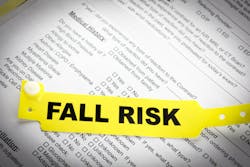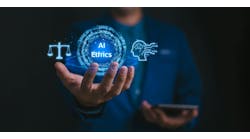Norcross, Ga.-based PruittHealth, a long-term care organization that serves approximately 24,000 patients daily across more than 180 locations, recently signed on for a full deployment of a cutting-edge solution from the Minneapolis-headquartered MatrixCare, a post-acute EHR software solutions company, after a three-month pilot. The solution, Clinical Advanced Insights, is a machine learning (ML) tool that uses artificial intelligence (AI) and predictive analytics to identify and alert skilled nursing facility staff to changes in residents’ conditions and fall risk. Focusing its pilot on skilled nursing residents who had experienced more than one fall in a 30-day period, PruittHealth was able to reduce the number of falls among those residents at one of its facilities to zero, saving them from possible injuries, hospitalizations or even death, while reducing costs.
Healthcare Innovation Managing Editor Janette Wider had the opportunity to speak to Annette Salisbury, senior vice president of clinical services at PruittHealth and Ingrid Svensson, chief product officer at MatrixCare about implementing ML and AI in the post-acute care setting.
Can you please give some background on Clinical Advanced Insights? How did falls risk become a priority?
Ingrid Svensson: Fall risk, right now, is a $50 billion expense in healthcare, so it is enormous annually. There are adverse incidents or reactions that happen to residents in these populations [nursing homes], so we needed to find a proactive way to prevent [these incidents] and start to take noise and cost out of the system. So, working with our RN group, we started noodling around with the whole ML aspect and looking at things like fall risk and if there are certain triggers that lead to that. It could be they're not eating 50 percent of their meals three times a day. They have a new medication they're taking, or they haven't been sleeping well, or there might be some other behavioral things that are in effect that would drive to this. These are all things that if you had endless time and resources, you could read all the documentation and everything that's coming in and say, these are my populations that I need to focus on. So, using ML is a way to cut through that and to drive proactivity.
How did implementation go at PruittHealth? Was there any pushback from leadership when Clinical Care Insights was first brought up as an option?
Annette Salisbury: Once we demoed it, they seemed to ease into it and [leadership saw] the time it was going to save, because of how things used to go. We have a morning clinical meeting every morning, and it took the unit managers pulling 24 hours of reports going through charts to see how they had to follow up on it, pulling orders, pulling different things like that. With this, they were able to pull up that dashboard and see what changes happened last night and the beauty of this dashboard. You could actually click on things, and it would take you straight to that patient's chart.
It was such a time saver. Once they saw that time saving, it was like, oh, wow! Now, I get a little bit of time back and I can go down the hall and look at the patient. So, once they saw that it was a no brainer. Then the nurse practitioners were like, well, what are they looking at? What is this? So, we had more people start getting intrigued in it. Then my rehab department was like, well, we want to see what this stuff is, too! So, we kind of did it in stages to get that buy.
How are ML and AI improving the lives of patients?
Svensson: As we went into this extension of our analytics offering, we've kept very much an eye on the changes in the industry. There is definitely a perfect storm happening right now with the aging population—with the comorbidities that we're seeing our residents and patients having. The workforce management side is critically a challenge, also. We want to focus on the patient, or the resident, depending on the care setting and ensure that we are providing the right tools to the staff and the teams to do that.
Salisbury: If you heard our webinar last week, we have our PHP, or managed care nurse practitioners, using ML [for the first time]. They rank their patients’ [risk] high, medium, and low. Before they started using this, they had some of their patients that were ranked low that maybe had visits every other week or once a month. When they started using ML, they saw that because of the predictive analytics, that some ranked out at a high or a moderate that they initially had ranked low.
When the nurse would come in and pull up [the dashboard], this person, for example, maybe overnight had a subtle change that they didn't know about initially. They would go look at them and say, oh, wow, they had a change overnight, so they would actually go look at them to see what that change was. Before, we didn't have this, so I spent many nights doing spreadsheets looking at people that had already [had a] fall. That was retrospect. Then I'm trying to figure out, OK, what did I miss? How did I miss this person? I went back and reviewed charts to see, did I miss a vital sign? Did I miss a med change? It was a lot of retrospect and going back. This is kind of putting it in my face now that, hey, somebody's had a vital sign change and they got a medication change. Now I can put them on my radar and watch them more closely and assign different staff to them. I rolled this out yesterday to my rehab department, and they're very excited about it because that gives them the opportunity to look at possibly picking a patient up before they become a fall risk, or they have a decline in their activities of daily living (ADL) to get them moving better.
What kind of feedback have your heard from nurses at PruittHealth after implementing ML?
Salisbury: If they see a subtle change, they can get in front of it and actually call the physician or call the nurse practitioner and have them go look at that patient. Maybe they need to get some IV fluids started before that patient takes a turn and maybe get some interventions in place. Or if they see this person as a potential fall risk, they can get some interventions put in place before that patient falls. Or the actual CNAs, because they can trigger out at a fall that puts a banner on their CNA care plan. When the CNA is logged in to MatrixCare, they see that fall risk banner, so they know, hey, that's a risk for fall. They know to maybe check on them more frequently. So, it alerts everybody to know that that person is at risk for a fall.
Let’s talk about ML and AI in general. How do nurses, staff, and physicians feel about using these tools?
Salisbury: At PruittHealth, we have our own physician group that sees our residents, not just with our managed care but we also have a physicians’ group that sees a lot of our residents in the Georgia area. They have access to this as well, and they like it. They were very receptive to it when we rolled it out to, because just as I said with our PHP nurse practitioners, they rely on the GEHRIMED system—that's the system that they use to rank their residents in. But once we show them this system, they use it as soon as they get into the facility to start their day. It's part of their workflow now, they'll pull up the clinical insight and see who had a change last night and see who they maybe need to go see that wasn't on their list.
Svensson: I think ML has been something that we know about, but it's a bit of a black box and I think there's always a little bit of concern around it. I think the messaging that needs to be understood is that these are tools, and these are methods that are going to take the manual reviews away.
You don't need to go through a number of different reports, putting together the spreadsheets on the acute side as well as on the post-acute side, so it saves time there. It’s also going to highlight what is important. It doesn't take the place of a doctor or a caregiver by any stretch, it's there to supplement their thinking and to allow them to get to some of the answers much faster because you take those manual steps of review out of it. I think holistically for healthcare, that is the shift, and I think it’s being much more understood as it becomes more practiced. Seeing it come out more often for the post-acute world, there is a large group of stakeholders that need this and are benefiting from this.


